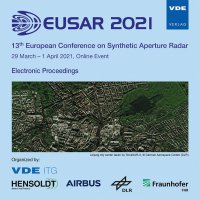AIS P/L on SAR satellite: the Copernicus Sentinel-1 solution
Konferenz: EUSAR 2021 - 13th European Conference on Synthetic Aperture Radar
29.03.2021 - 01.04.2021 in online
Tagungsband: EUSAR 2021
Seiten: 6Sprache: EnglischTyp: PDF
Autoren:
Spataro, Francesca; Pavia, Patrizio; Roscigno, Rita (Thales Alenia Space, Roma, Italy)
Torres, Ramon; Bibby, David; Cossu, Mario (European Space Agency (ESA-ESTEC), Noordwijk, The Netherlands)
Inhalt:
The combination of space based AIS data with SAR imagery gives the benefit of an augmentation of the SAR data by facilitating the isolation and identification of targets of interest from the large number of legitimate vessels. The Copernicus Sentinel-1 C and D satellites have been designed with consideration for the dynamic nature of ship operations in terms of speed and ship density. This has been implemented though the simultaneous acquisition of SAR imagery and space based AIS data in order to simplify the data fusion and analysis of acquired data. In particular, the AIS data will be collected during SAR datatake acquisitions in order to receive the AIS signal transmitted from the mobile stations on the same access area of the radar instrument by allowing the required time and position correlation for the post processing. Through on ground correlation of the time stamps of the AIS data and SAR space packets and exploiting the information contained in de-modulated AIS messages, it will be possible to perform the data fusion and interpre-tation of acquired data. Particular attention in the AIS payload design for S-1 mission has been given to the definition of the antenna system since it represents a crucial element for the optimisation of the SAR and AIS data correlation process. Differently from an on ground AIS system, the space-based system has to face several more challenging technical issues; the main one is represented by message collisions (i.e. the satellite Field of View covers several SOTDMA cells). Due to the operative frequency, to the antenna dimensions and to the accommodation constraints imposed by the satellite, the final solution for the antenna system has been designed in order to provide the required spatial coverage and antenna pattern selectivity w.r.t the coverage envelope of all the SAR modes by minimizing, at the same time, the antenna directivity in the out-side areas (i.e. to reduce the number of collisions). Details on the AIS operations in conjunction with the SAR instrument will be provided in this paper together with the description of the analysis and development of the antenna at a system level and the performances at AIS instrument level verified though an AIS simulator internally developed in TAS in Italy.


